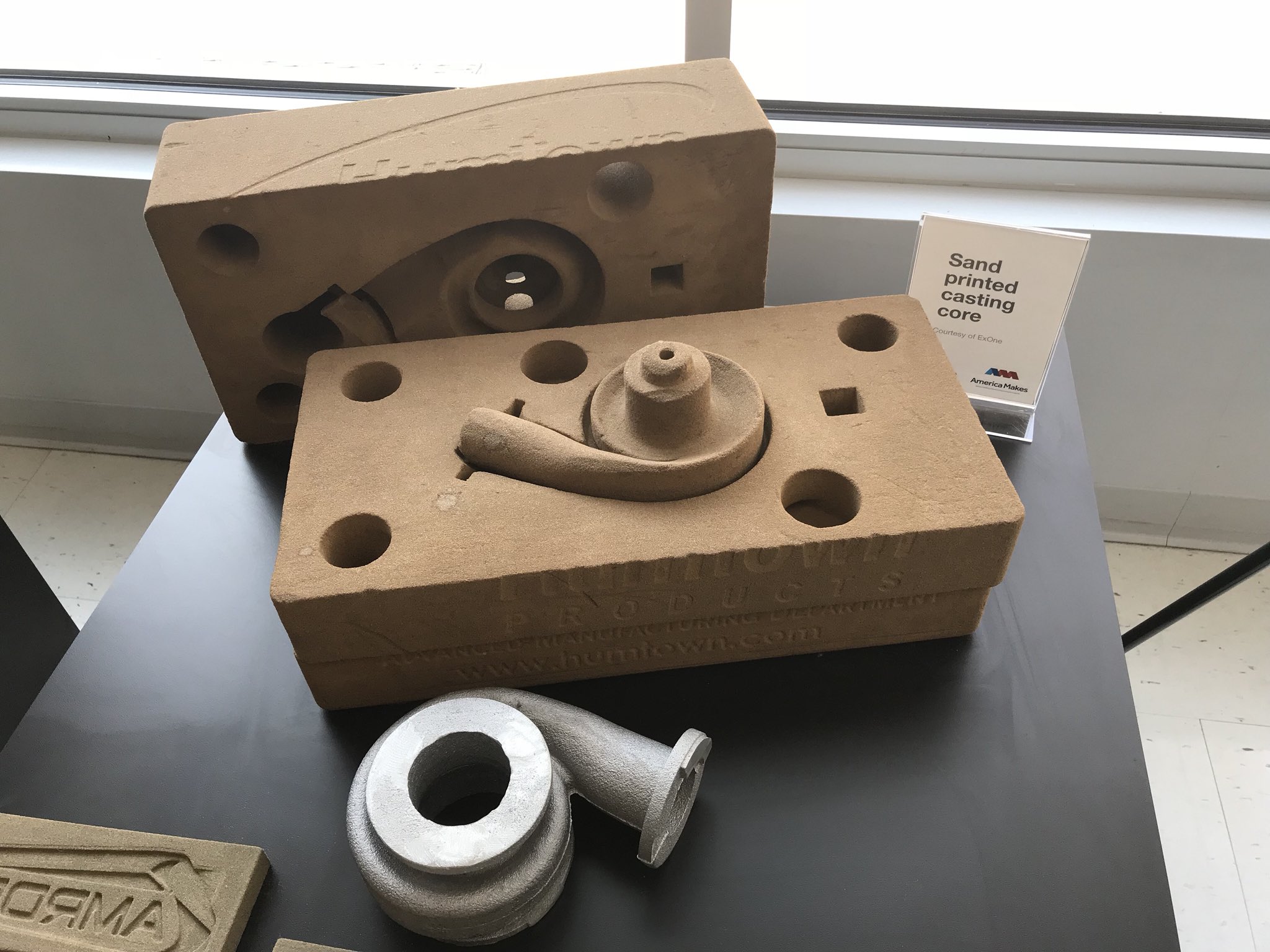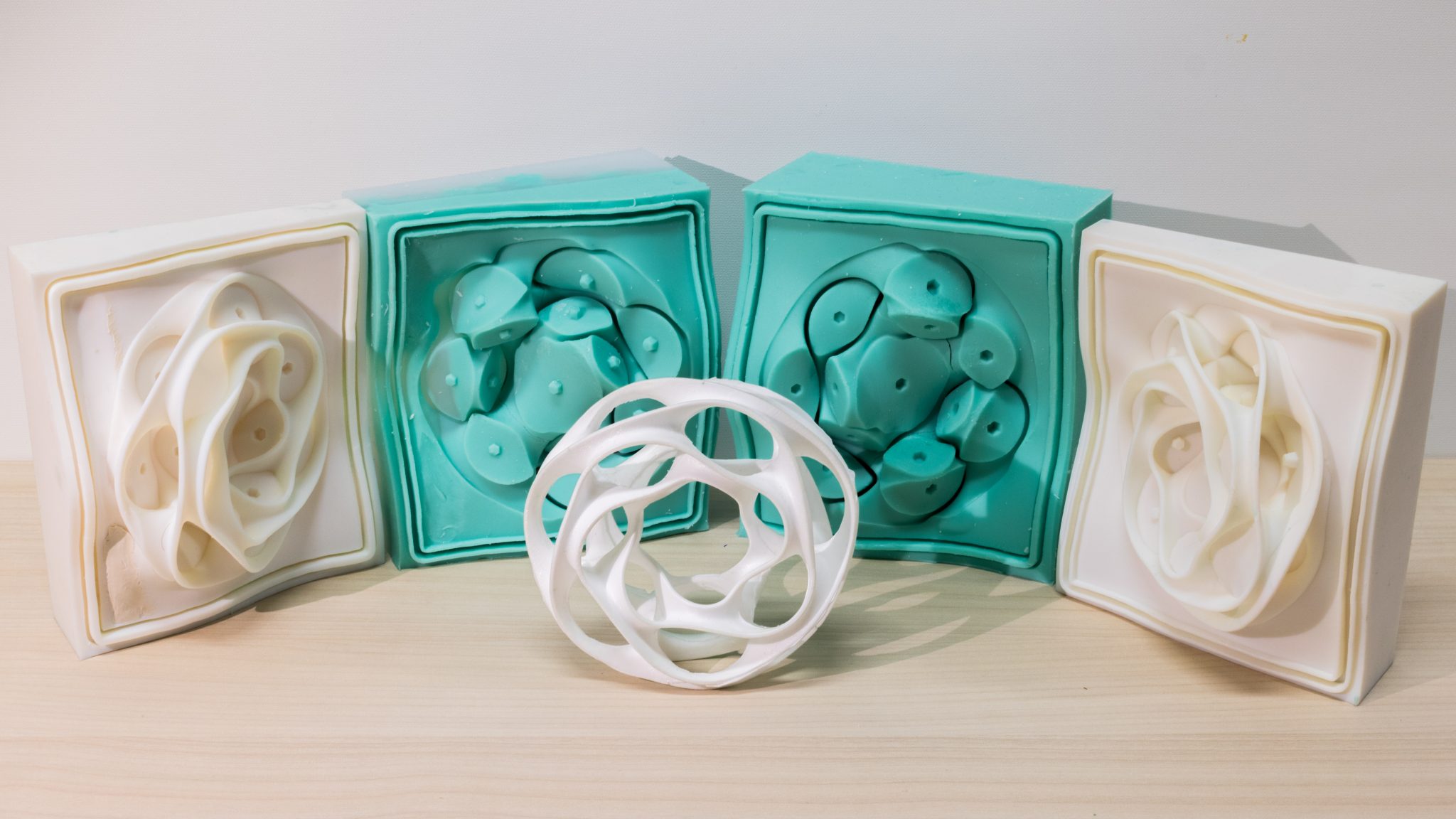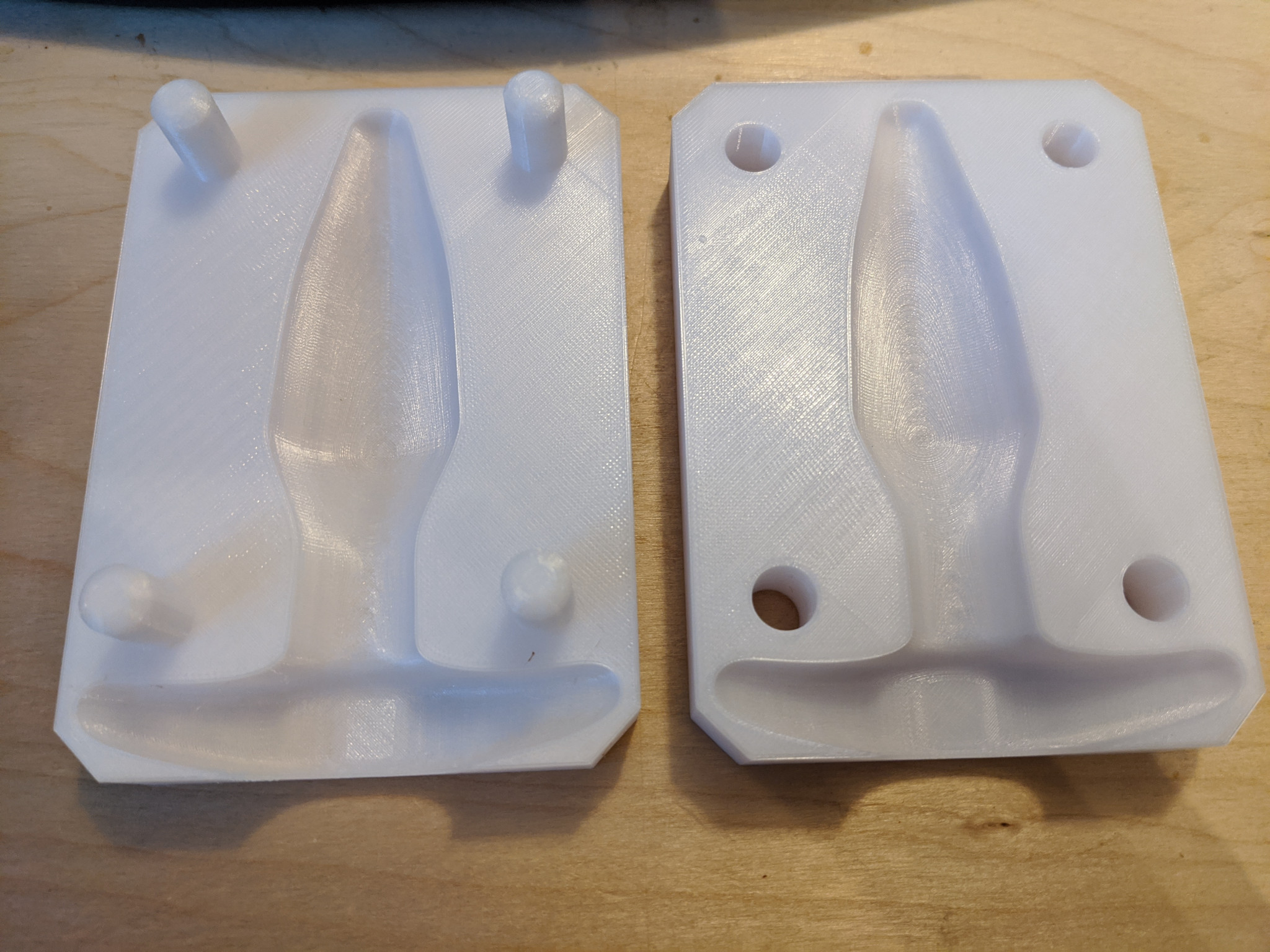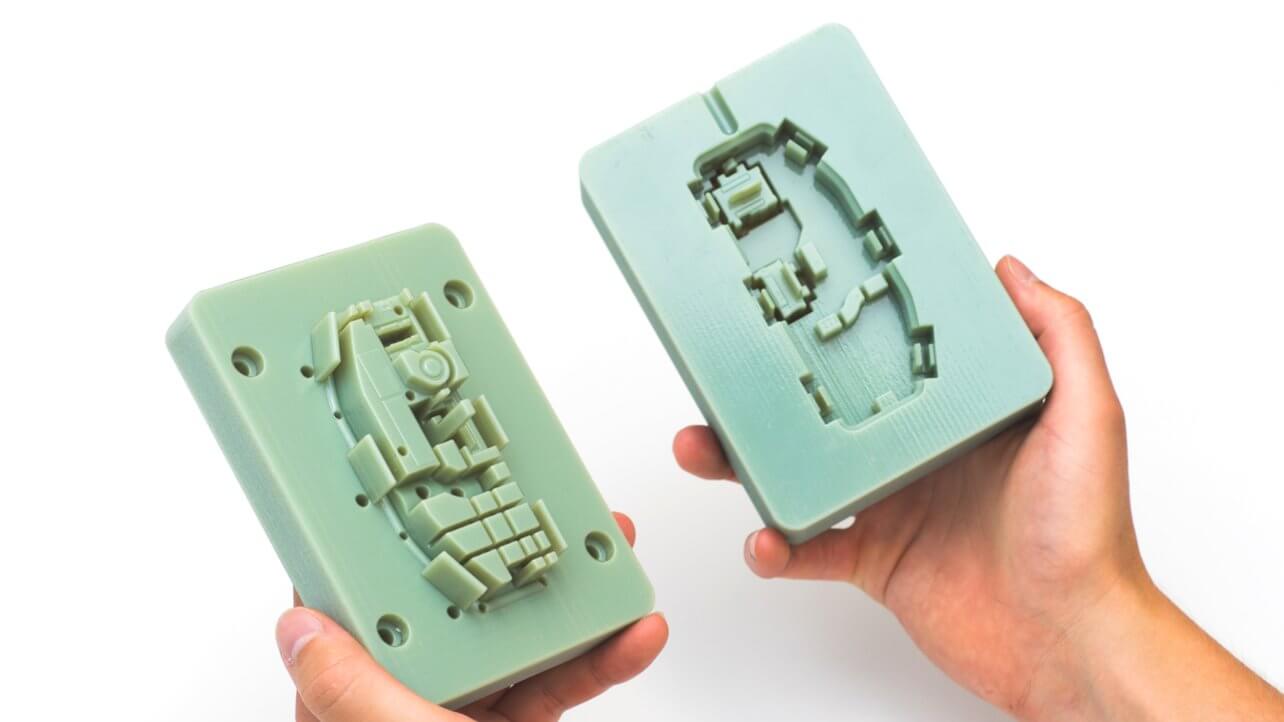
3D Printing lowrun injection molds 3D Hubs
Silicone Casting Mold Design. Our white paper provides a step-by-step guide for designing 3D printed tooling for this project. These basic design steps and best practices apply to any injection-filled mold or overmold, with gravity-aided fill: Design your base volume, including any encapsulated hardware.

How to Use 3D Printed Injection Molds for LowVolume Production YouTube
3D-printed molds often require additional post-processing and finishing steps to achieve the desired mold quality. This may involve sanding, sealing, or applying surface treatments. The durability and lifespan of 3D-printed molds may be inferior to those produced using traditional methods. Depending on the materials and printing techniques.

Learn how to create a basic mold using a 3D printed shape
3D printed tooling is the process of using 3D printing to create molds, jigs, fixtures, and other custom tools for production. These tools are ideal for creating complex shapes that would be difficult or impossible to produce with traditional manufacturing techniques. To create a mold using 3D printing, a 3D CAD model of the part is first created.

3D Printing Applications Injection Molding
Download files and build them with your 3D printer, laser cutter, or CNC. Thingiverse is a universe of things.

3D Printed Injection Mold With Polyjet Digital ABS FacFox Docs
One of the most established combinations of AM and metal casting is the 3D printing of patterns or models for casting processes like direct investment casting and sand casting. A pattern is a replica of the final part and is used to create the mold. The basic procedure involves placing the pattern in a container, then surrounding the pattern.

3D printed concrete 2piece aluminum mold. 3D Printer Pinterest Concrete, 3d and 3D Printing
A 3D printed injection mold is made from plastic polymers such as ABS and polyethylene, using one of the different types of 3D printing technologies. Choosing 3D printing technology depends majorly on the mold's material makeup, properties, and intended mold sophistication. 3D printing plastic mold is a cheap process highly suitable for.

3D Printed Molds with Silicone Rubber from Smooth On Food Safe Molds & 2 Part Molds YouTube
3D printing technology has also solved another production challenge in prosthetic molds. The exothermic, or heat-generating properties of the polymerization stage in the cooling process of the bone cement, can make it difficult to find a material that can be easily separated from the mold.

3D Printing a Mold for a Slipcasting Mold 6 Steps (with Pictures) Instructables
3D-printed molds offer several advantages over molds made by traditional manufacturing methods, including: Cost-Effectiveness: 3D-printed injection molds are more cost-effective than those made by traditional methods for most applications. The plastic materials used to make the printed molds are less expensive than the aluminum and steel used.

3d printing molds for casting
Let's see if we can make our own 3D Printed Mold Boxes that we can pour silicone into for casting or melting 3D Prints!Silicone Skull Molds - https://amzn.to.

Guide to 3D printing molds for metal casting Aniwaa
When 3D printing a mold, you will want to use a material with good mechanical strength and heat resistance. A material that expands minimally when exposed to high temperatures would also be ideal to avoid dimensional inaccuracies due to warping. The Digital ABS Plus filament from Stratasys is a very popular option.

3D Printed Prototype Mould 3D Printing Ireland3D Printing Ireland
Step 2: Mold Box and Parting Line. Arrange your original object square to how you decided the mold should be printed. Draw a 3D box around your original, leaving at least a centimeter or so around all sides. You can cut it down later to save on material (a good idea if you are using a service that charges by volume).

University researchers develop new method for making 3D printed molds 3D Printing Industry
Using 3D printed molds, dies, and patterns to supplement molding and casting processes tends to be both faster and less expensive than CNC milling, and easier than working with silicone molds. Beyond injection molding, 3D printed molds can be used for the following molding and casting processes: Thermoforming and vacuum forming.

3D Printed Molds For Concrete YouTube
This video walks through the process I use when #3Dprinting molds. I also discuss some of the tips that will help your molds be more successful so you don't.

Silicone Casting with 3D Printed Moulds Dubious Creations
3D Printed Molds Tutorial: How to DIY Your Own. by Ross Lawless. Updated Jul 14, 2023. Using your 3D printer to create molds is not only possible but easy. Check out our simple guide on how to make 3D printed molds yourself!

Making 3D Printed Molds YouTube
Here are the steps to make silicone molds with a 3D printer: 3D print your model. Remove model and sand support marks. Determine the mold type to cast. 3D print a mold box. Place the mold box around the modeling clay. Seal the gaps between the modeling clay and the box. Mark a half line on the model.

Tips for 3D printing molds
Step 3: Casting. Apply petroleum jelly or vegetable oil to the inner surface of the mold. Using Paper tape, align the 2 parts of the mold. Mix Plaster of Paris and water in a 4:1 ratio. Pour the mix into the cast and leave it to set.